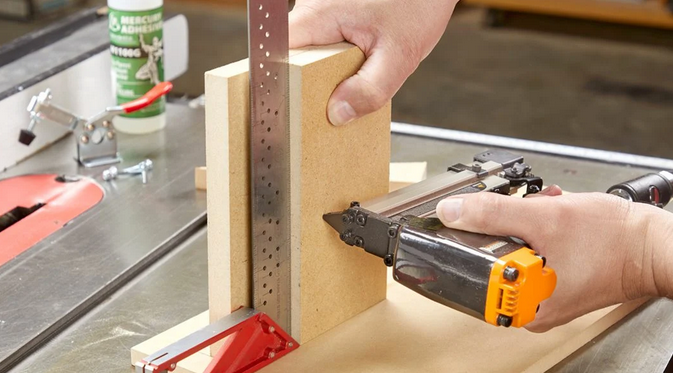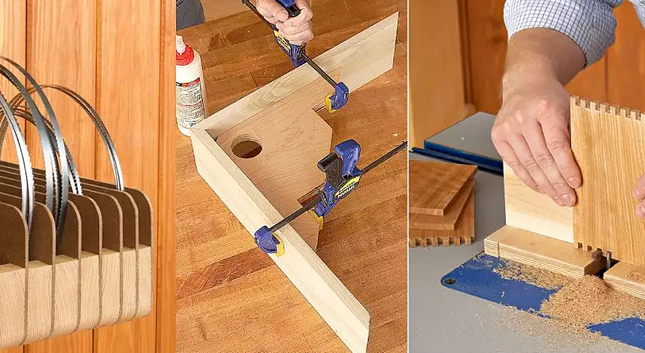Woodworking, a blend of artistry and engineering, often relies on precision and accuracy. Creating furniture, cabinets, or even intricate wooden designs demands more than just skilled hands and sharp tools; it requires a range of aids and accessories. Among these indispensable tools are woodworking jigs. These clever contraptions empower woodworkers to enhance accuracy, repeatability, and efficiency in their projects.

The Beauty of Woodworking Jigs
Woodworking jigs, in their simplest form, are templates or guides that assist in controlling the movement of tools or workpieces during the crafting process. They are like the unsung heroes of the workshop, working diligently behind the scenes to ensure that every cut, joint, or bore aligns perfectly with the woodworker’s vision.
Types of Woodworking Jigs
- Router Jigs: These jigs help guide routers to create precise cuts, patterns, and edges. Whether you’re crafting intricate inlays or dado joints, router jigs ensure accuracy.
- Table Saw Jigs: Table saws are woodworking workhorses, and jigs make them even more versatile. With a crosscut sledge or tapering jig, you can achieve consistent, clean cuts.
- Drill Press Jigs: Achieving perfectly aligned holes for dowels or hinges can be a challenge. Drill press jigs make this task a breeze, ensuring straight and accurate drilling.
- Joinery Jigs: Whether it’s dovetails, mortise and tenon joints, or box joints, joinery jigs are invaluable for creating strong, seamless connections.
Advantages of Woodworking Jigs
- Precision: The primary purpose of jigs is to deliver precision. Whether you’re crafting fine furniture or simple wooden boxes, precise cuts and measurements are crucial. Jigs eliminate human error, ensuring consistent results.
- Efficiency: Time is money, and jigs save plenty of it. They streamline repetitive tasks, allowing you to complete projects faster without compromising quality.
- Safety: Woodworking can be dangerous, especially when working with power tools. Jigs often include safety features that reduce the risk of accidents, keeping you safe in the workshop.
Popular Woodworking Jigs
- Tapering Jig: Achieving tapered legs for tables or chairs is a breeze with a tapering jig. It holds the workpiece securely and guides it through the table saw, resulting in evenly tapered cuts.
- Dovetail Jig: Crafting dovetail joints by hand can be challenging. Dovetail jigs, whether for routers or table saws, simplify this intricate joint, creating tight, attractive connections.
- Box Joint Jig: Box joints are ideal for joining corners of boxes, drawers, or cabinets. A box joint jig, often used with a table saw or router ensures precise cuts and spacing for a snug fit.
Creating Your Own Jigs
While many woodworking jigs are available commercially, crafting your own can be a rewarding experience. Tailoring jigs to your specific projects allows for greater customization and versatility.
- Materials: Start with quality materials that match the task at hand. Plywood and hardwoods are popular choices. Ensure your materials are flat and straight to guarantee accurate results.
- Planning: Plan your jig carefully, considering the dimensions and design needed for your project. Sketch out the jig’s structure and any adjustable components.
- Construction: Cut and assemble the jig with precision. Use appropriate joinery techniques, such as dadoes or rabbets, to ensure stability and accuracy.
- Testing: Before using your jig on a project, perform test runs on scrap wood. This helps fine-tune the jig and ensures it functions as intended.
Maintaining Woodworking Jigs
Like any tool, woodworking jigs require maintenance to perform at their best.
- Cleaning: Remove wood chips, sawdust, and residue from your jigs after each use. This ensures smoother operation and prevents damage to the workpiece.
- Inspect Regularly: Check for wear and tear, loose components, or damage. Replace or repair any worn-out parts promptly.
- Lubrication: Apply a lubricant, such as paraffin wax or silicone spray, to moving parts to reduce friction and enhance functionality.
Conclusion
Woodworking jigs are unsung heroes of the craft, enhancing precision, efficiency, and safety in the workshop. Whether you’re a novice or an experienced woodworker, incorporating jigs into your projects can elevate your craftsmanship to new heights. So, don’t hesitate to explore the world of woodworking jigs and unlock the full potential



114 thoughts on “Woodworking Jigs and Fixtures”
Comments are closed.